It is no secret to regular readers that I have been dying to get my hands on the 3-inch Kimber K6s. Thanks once again to the hard work of Mike and Steve, I finally got my chance to test out this revolver. This field report will cover my general impressions, and shooting and carrying what I have dubbed the “biggest little roundgun!”
The K6s made a big splash when introduced, and Mike did a phenomenal job of setting the table for this report a couple of weeks ago. The standard K6 offers a number of improvements of existing steel-frame snubbies, but it wasn’t quite enough of an upgrade for me to immediately make the leap. The 3-inch version is a different animal altogether, though. In my estimation the overall improvement in this gun is greater than the sum of its parts.
Craftsmanship & Aesthetics
The first thing you will notice when you pull this revolver out of the box is its excellent craftsmanship. I’ve handled a lot of revolvers in the past two years and none has impressed me like the 3″ Kimber K6s. First, the finish (at least on my exemplar) is absolutely impeccable. The stainless steel is pleasingly softened by a uniform bead blast. It feels smooth to the hand without being “grabby” like a highly polished surface might be. This finish highlights the grain of the steel, and is absolutely gorgeous.
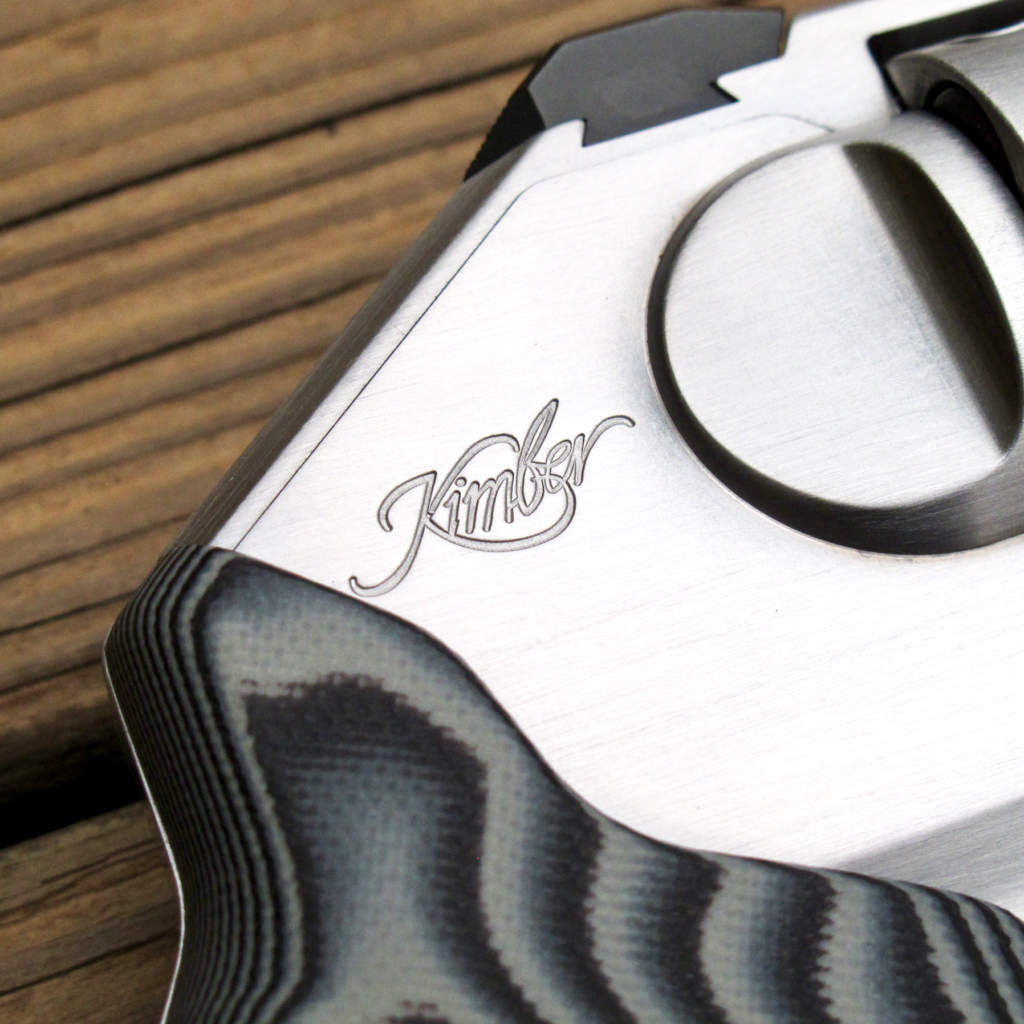
Expecting to find a few machining marks on the inside of the yoke, I opened up the cylinder. There were none there, so I pulled the grips off. Still nothing. Finally, I resorted to peeling off the side-plate for a deeper inspection but found nary a blemish. I was (and remain) impressed with the general quality and craftsmanship found in this revolver. I hate to gush over the thing but my exemplar is exceptionally well made.
One thing that is conspicuous in its absence is the lack of admonishments to read the instruction manual or that the gun will fire if the trigger is pulled, or other such warnings. Kimber leaves the finish on the K6s relatively unscathed. The right side of the barrel bears and understated, matter-of-fact “.357 Magnum”; the left a stylized “K6s”. The right side of the frame is marked with an elegant “Kimber”, while the left tastefully records only the manufacturer, city of origin (Yonkers, NY, USA) and the serial number. This is in contrast to the billboards that some manufacturers choose to install on the barrels and slides of their handguns, and I appreciate it.
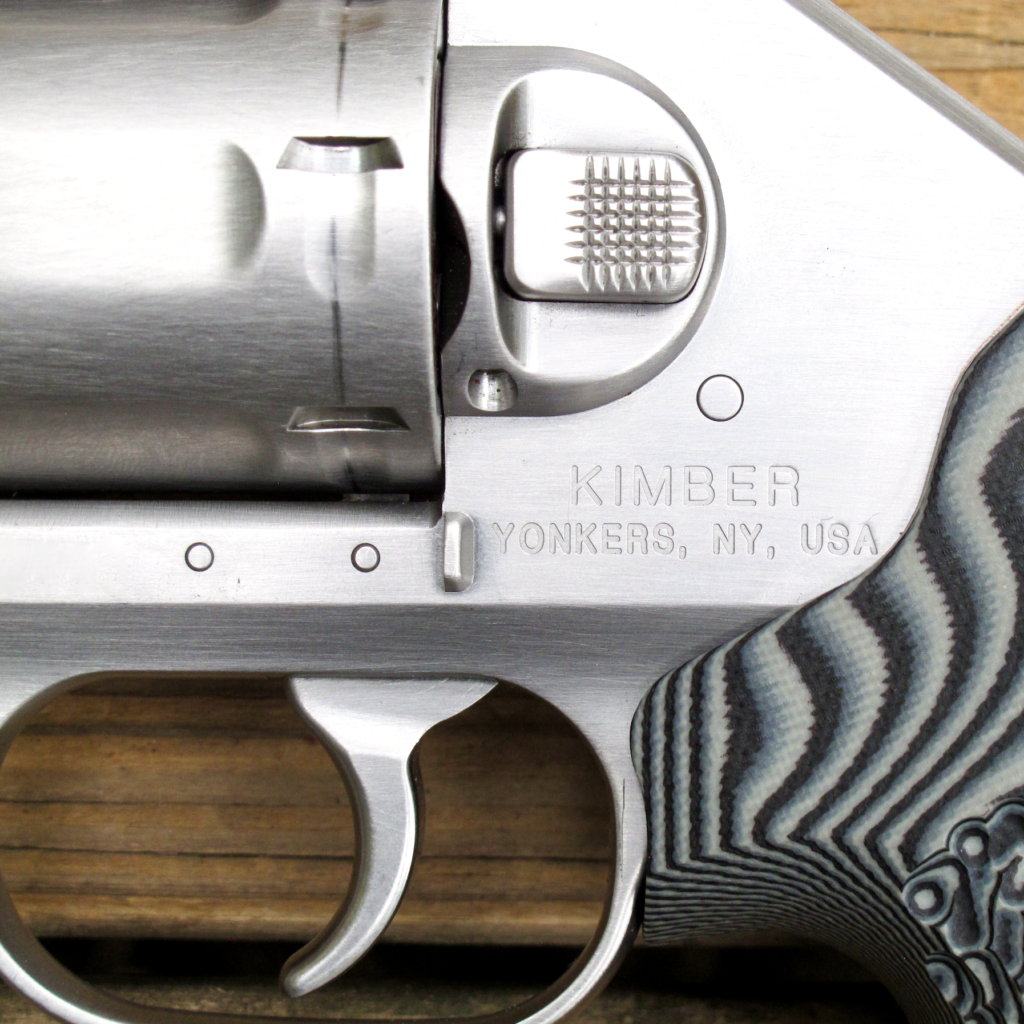
In its totality the 3-inch K6s initially presents a slightly awkward appearance. I thought it might just be me, but my FFL commented on it, too. The long nose and matching factory grip seem somewhat at odds with its diminutive frame. One quickly adapts to the somewhat unbalanced physique, especially in appreciation of the view of the gun that matters the most: the one from behind the sights.
Notable Features
I promise I won’t retread everything Mike wrote about the development of the Kimber rotator. There are a few features that are important to my primary area of interest: the use of the revolver for self-defense. These four features define the 3-inch Kimber K6s in my mind, and differentiate it from all other stock revolvers on the market. Any of these features would be an upgrade on most revolvers and the four of them together create an inimitable combination. They are:
Sights: I can’t count the number of small revolvers I’ve rejected because of the sights. The sights on most small revolvers seem to be an afterthought. “Hey guys, we forgot sights. No sense reinventing the wheel, we’re already tooled up. Hmmm. . .let’s just mill a groove in the top strap and call it good!” This is not the case with the K6s line. Kimber equips all variants of the K6s with excellent sights. Though they bear the ubiquitous triple dot setup, they are visible and fast. Kimber even offers fiber optic and tritium replacement options. I’d love to see a two-dot setup à la Heinie’s Straight Eights. For now the factory sight pictures will more than suffice, and be a considerable upgrade for most revolver users.
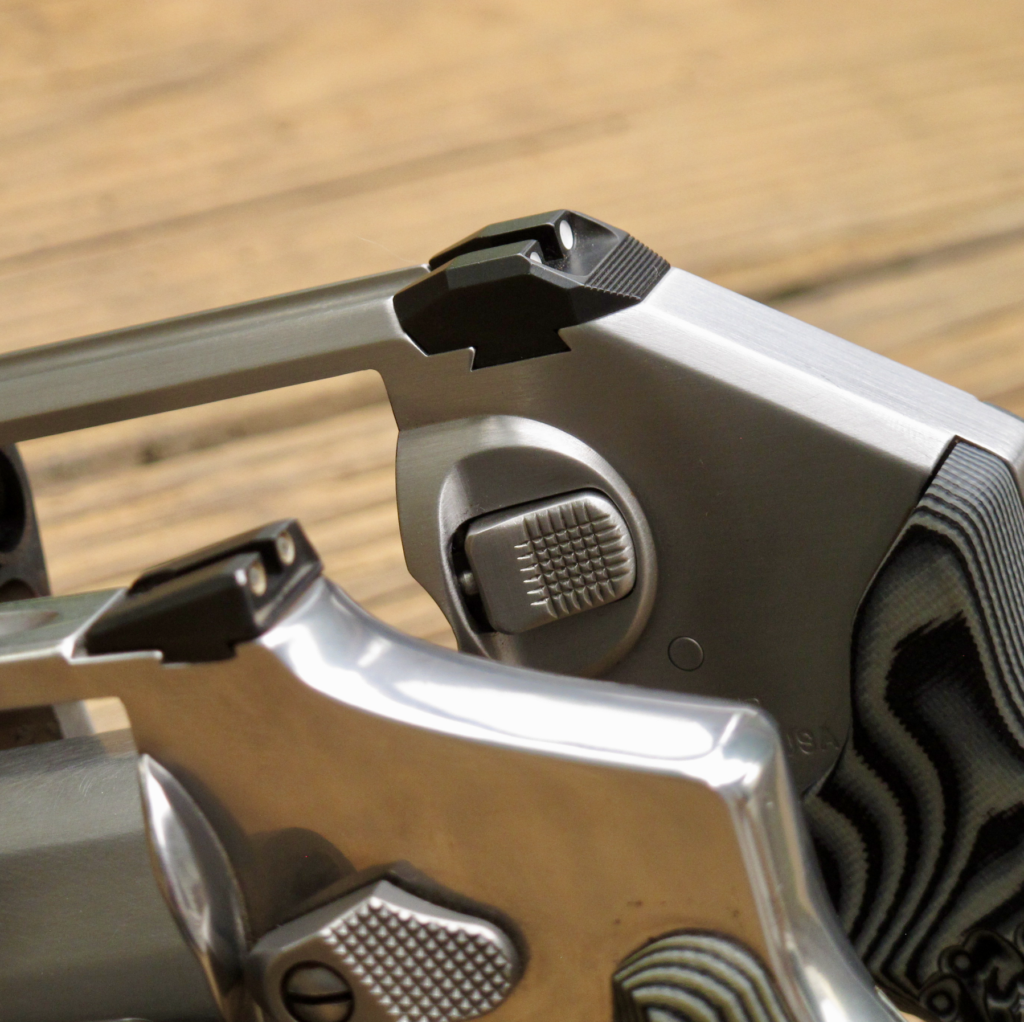
Lengthened Barrel: The second thing that sets the 3-inch Kimber K6s apart from most carry-sized revolvers is the extra inch of barrel. It doesn’t seem like a lot, but the added sight radius makes a world of difference. It also lends some additional heft. Though Kimber’s specification cites the weight at 25.1 ounces, mine weighed in at 26.67 ounces unloaded. I don’t mind the discrepancy; this a great carry and shooting weight, though it does create a slightly nose-heavy feel.
Trigger: The K6s’s trigger is a thing of beauty. If you’re used to the 12-14 lb. pulls on S&W J-frames, get ready to be impressed. I allowed a few people to shoot the K6s at the handgun competition course I recently attended. Uniformly they were all impressed by the trigger. One individual asked me no fewer than three times, “is that really the factory trigger?!” The excellent trigger allows one to take advantage of the sights and added sight radius, and makes this revolver a heck of a shooter.
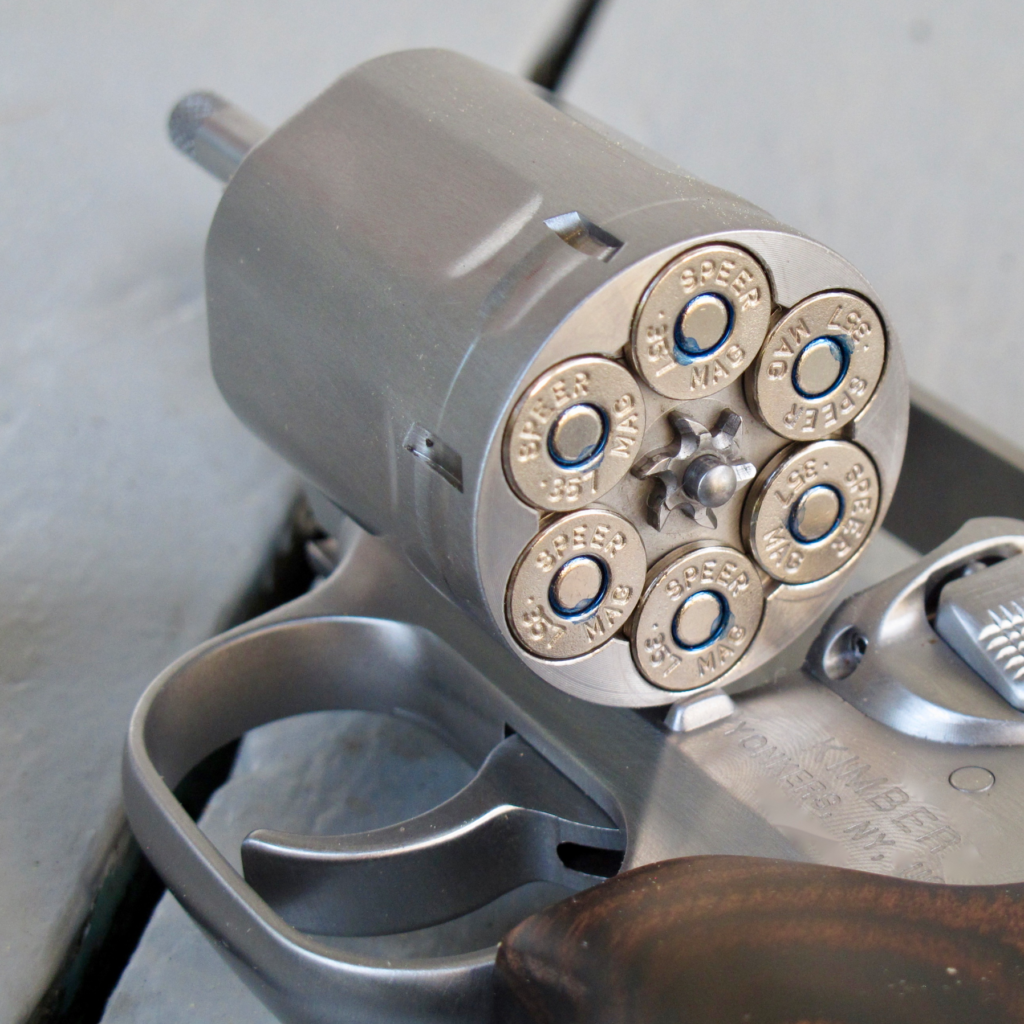
The Sixth Round: I love that Kimber chose to make this a six-shooter. Several times at the range I caught myself pausing after firing the fifth round, accustomed as I am to the J-Frame. Having that sixth shot is certainly reassuring in a self-defense revolver.
Range Time
I took the 3-inch Kimber K6s to the range half a dozen times. Approximately 450 rounds were fired through her, in an assortment of standard-pressure .38, +P .38, and a spectrum of Magnum ammo. I also put the K6s into the hands of some others with varying bodies of revolver experience including a State Trooper and self-described RevolverGuy, a female first-timer shooter, and some experienced auto-shooters with little practical time on revolvers.
My impression upon firing the first shots through the 3-inch Kimber K6s was that I had been deceived. While it packs like a J-Frame, it handles like a K-Frame. This caused me to misjudge it and naturally, I expected recoil to be on par with a K-Frame. Aaaand I quickly learned it’s not quite there. Still, I was comfortable enough to put it in the hands of a woman who has never fired a handgun (loaded with light .38s, of course).
If I had it to do over again I probably would have chosen a different firearm. It wasn’t bad, but it certainly wasn’t the best choice. Fortunately she was more impacted by the muzzle blast from the AR in the (indoor) booth next to us than the revolver in her hand. She has gone to the range with me since, and seems inclined to continue to do so. The lesson for us experienced revolver shooters: it might be big for a little gun, but you should mostly load it like it’s a little one.
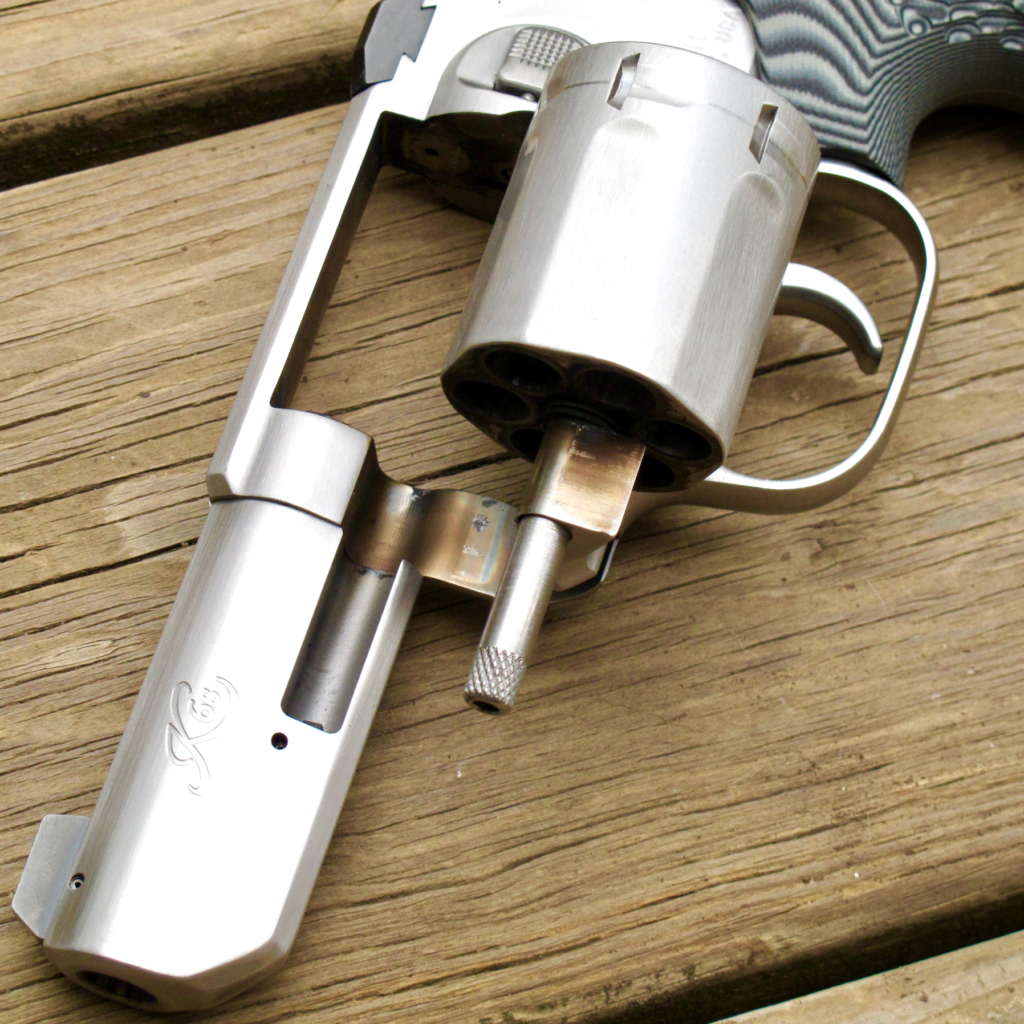
The next thing I learned is that I don’t love the factory wooden grip on the 3-inch Kimber K6s. It is beautiful and if feels great in the hand and on the belt. But it quickly becomes slippery. Even with warm .38 ammo I found my hand slipping higher and higher on the grip with each shot. The higher my hand went on the backstrap, the angle at which my finger addressed the trigger became more and more exaggerated. This makes it very difficult to get apply a straight, rearward press to the trigger. I contacted VZ grips and they promptly sent a set of stippled G10 replacement stocks that corrected this issue. Also of note to those of you who intend to keep your gun in display-case condition: the factory grips quickly became dinged up by ejected brass.
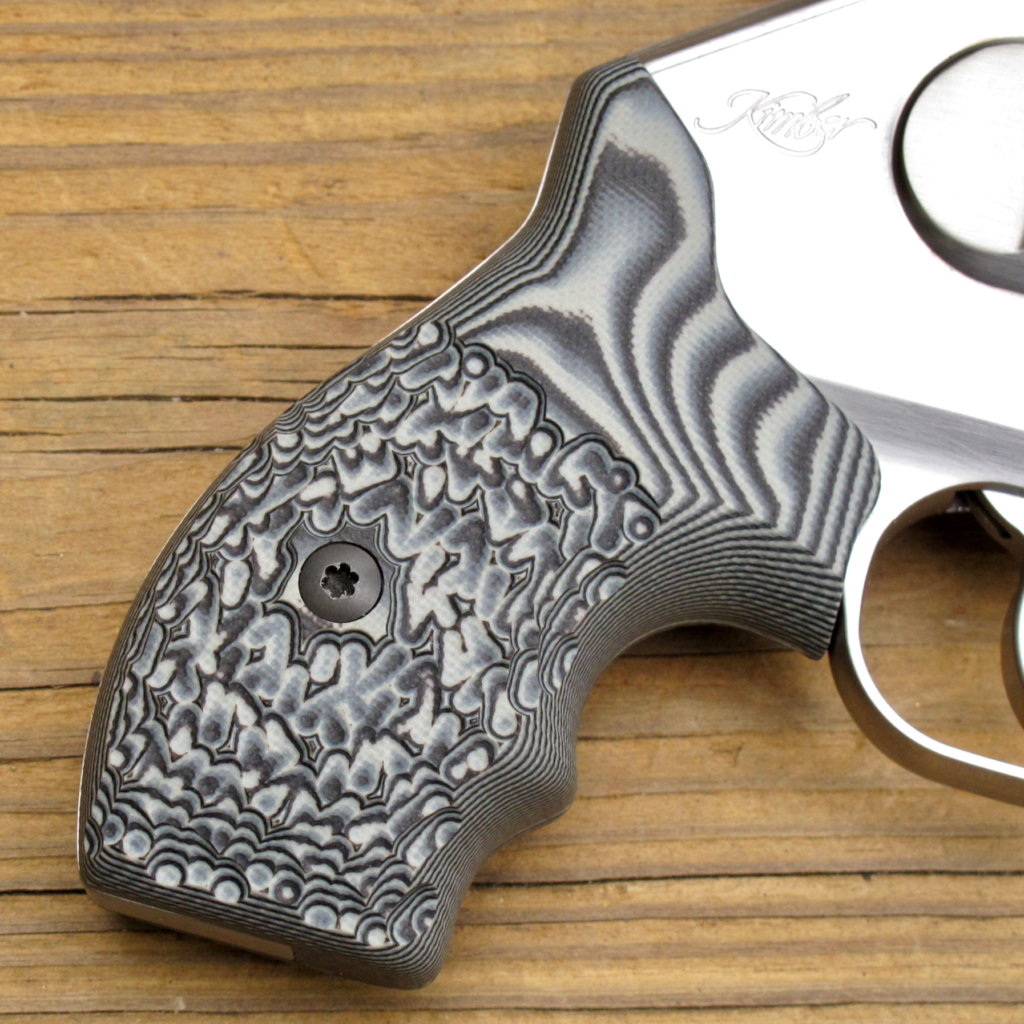
Finally, the sight regulation on the 3-inch Kimber K6s could be better. The K6’s sights seem to be regulated for standard pressure .38 Special. I was thrilled to note that my first few cylinders of Geco .38 ammo were dead on. As soon as I loaded up some +Ps my excitement began to droop, along with the placement of the shots. I wish Kimber had considered this and regulated the sights for carry ammo. I imagine most users will carry .38 Special +P ammo, and a few (like me) will carry light .357s. Fortunately for me I am somewhat accustomed to this phenomenon and am used to aiming an inch or two high, a habit I had to work to break when transitioning to the M&P.
Shoots Like a Big Gun. . .
After becoming acquainted with the 3-inch Kimber K6s, I pseudo-tested three loads for accuracy. This test was not a bench-rest exercise. I loaded six rounds of each, ran my targets out to 10 yards, and recorded the first group captured with each load. This was not a slow-fire exercise, but rather a pretty vigorous test of three potential carry candidates.
The first load fired was the new SuperVel .38 +P Super Snub. This load launches a 90-grain JHP at a blistering 1300 FPS from a 2″ barrel, and at a verified 1,350 FPS through the Kimber’s longer tube. This load was at once the loudest and lightest recoiling of the bunch. Due to the higher velocity of this ammunition, it grouped somewhat low, with with the widest lateral dispersion of the three tested.
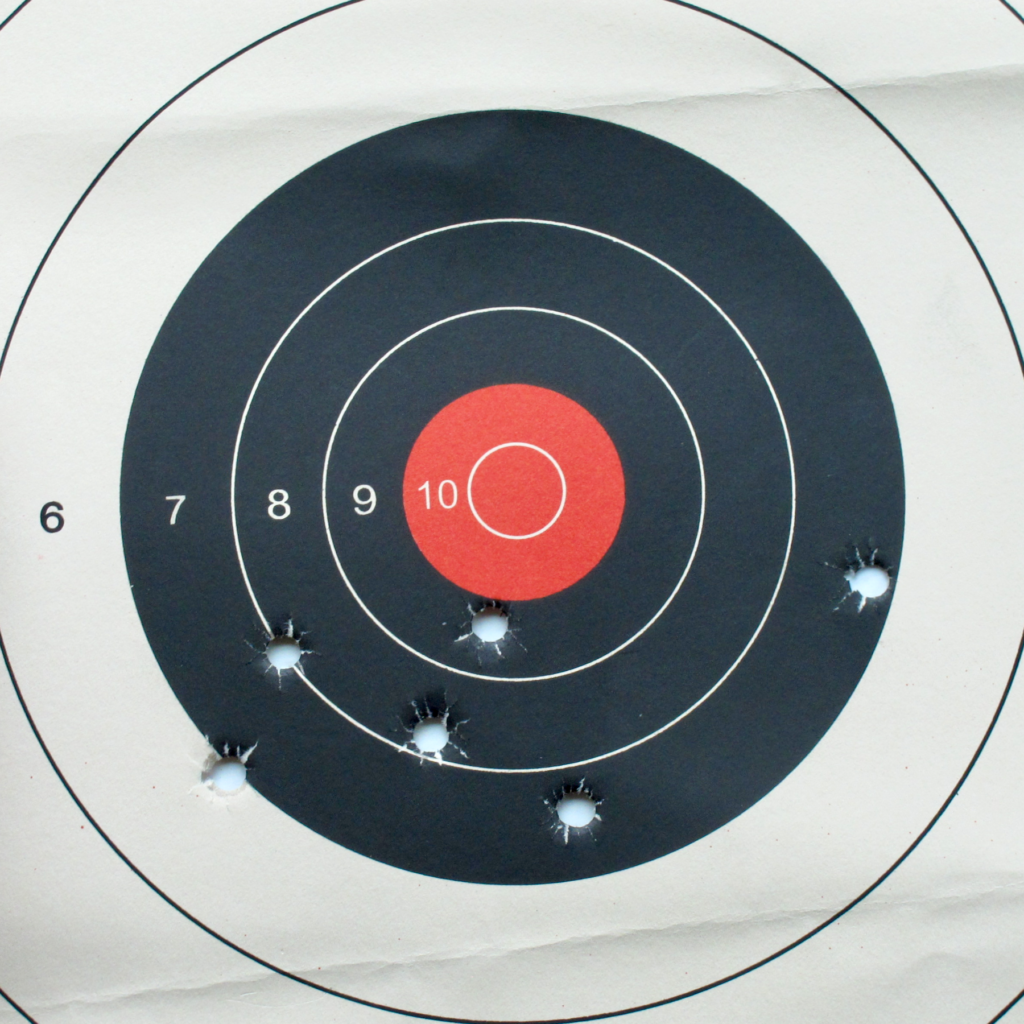
The next load tested was Remington’s old school 125-grain +P SJHP. This round grouped well, and was only slightly lower than point-of-aim.
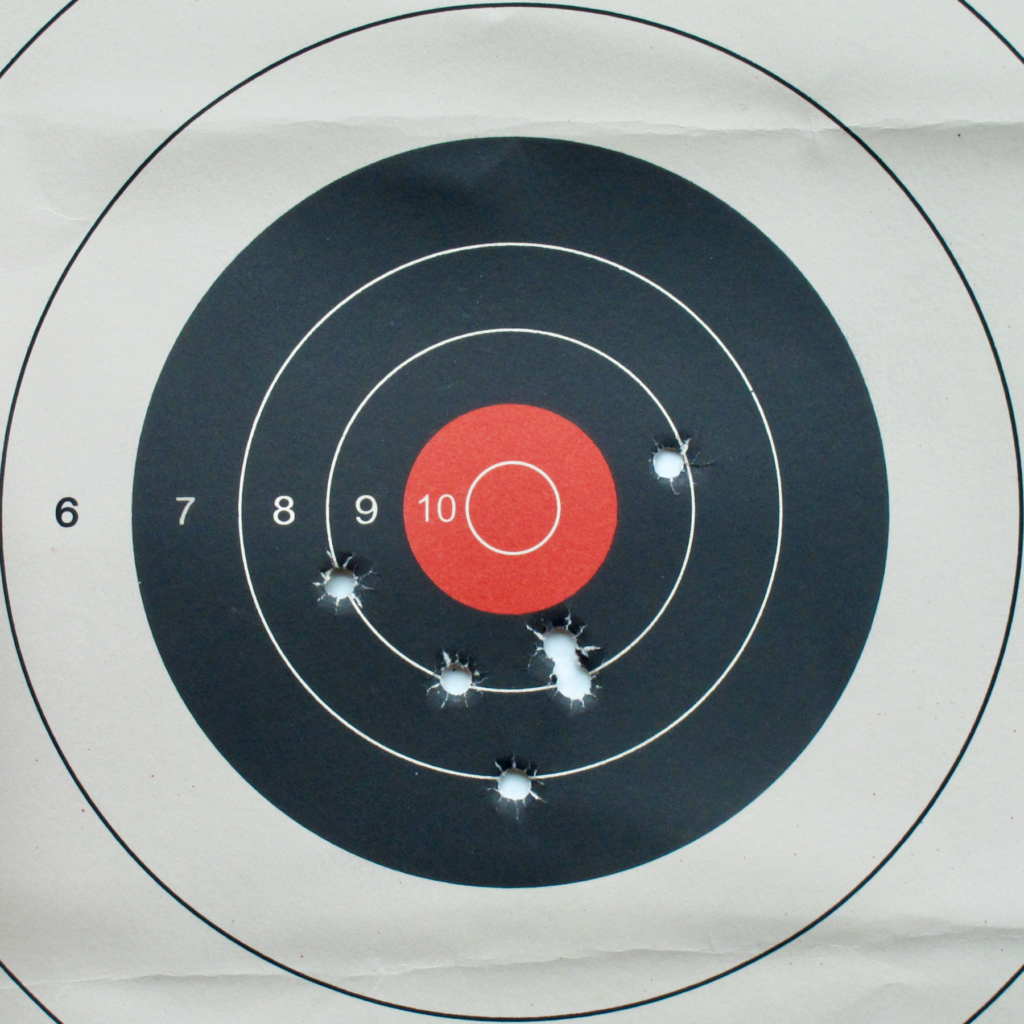
Finally, I shot the load I’ve been carrying in the K6s, the .357 Magnum version of the Speer 135-grain Short Barrel Gold Dot. This group wasn’t bad, and the one stray round at 7 o’clock was a called flyer. At this distance the load is roughly 2 to 2.5″ low, and within my range of acceptability.
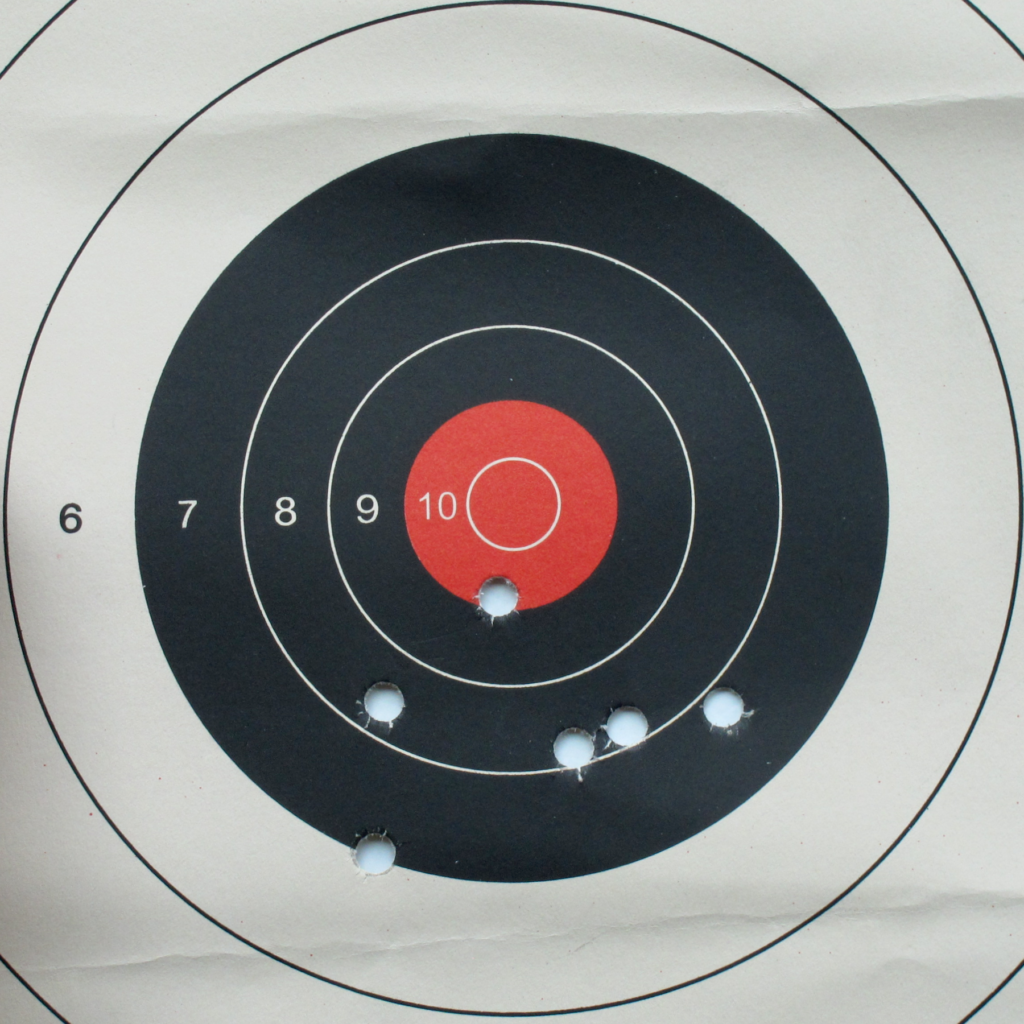
Though these targets aren’t terribly impressive, I am still happy with them relative to what I can do with other small revolvers. Even more impressive is the gun’s performance at extended distances. At the Seeklander course, I put the K6s in the hands of a State Trooper named Mark. Mark’s first shot was at a man-sized steel target at 100 yards. The first round went low. He corrected, and the next five found the target. I was able to duplicate his efforts. After firing the gun enough to be comfortable in its reliability, I holstered it up.
. . .Carries Like a Little Gun!
As regulars here know, I recently made the switch to soulless plastic for daily carry†. I’ve had some misgivings about appendix-carry of a striker-fired firearm. Tucking the 3-inch barreled revolver in my waistband gave me an old, familiar comfort. Even though all models of the K6s are outfitted with excellent triggers (more on that later) the 10 lb pull on the Kimber provides a comfortable margin-for-error that is absent on the striker-fired gun.
I fired roughly two hundred fifty rounds through the Kimber before I felt comfortable carrying it. Once this was done, I was ready to take it on the street. The weight and size of the Kimber preclude pocket carry, so I reached out to DeSantis for some leather. They responded with two holsters for the 3-inch Kimber K6s. The first is the outside-the-waistband DeSantis Speed Scabbard. The other is the DeSantis Flex-Tuck. I quickly discovered that I greatly preferred the Flex-Tuck and IWB carry with the K6s. I will examine these holsters in more detail in a future review.
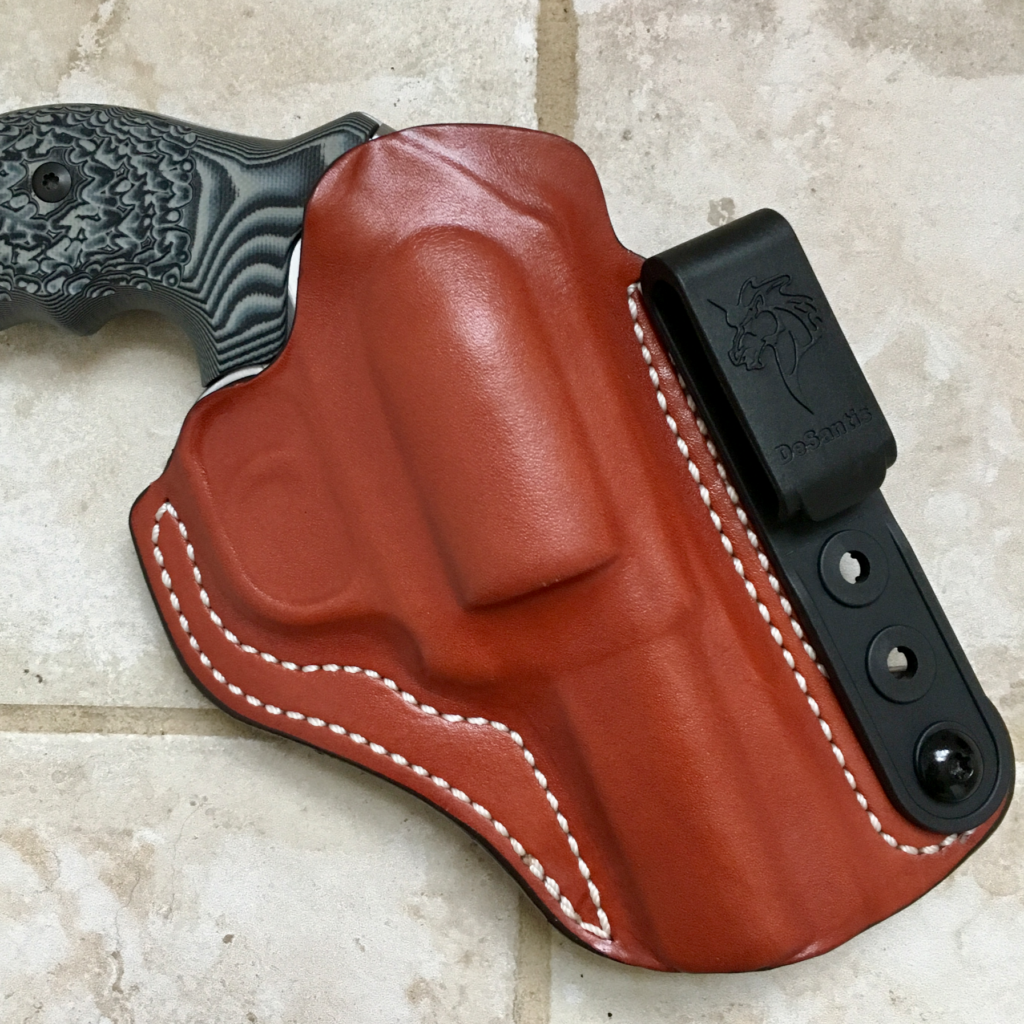
I was pleased to find I was able to continue my habit of AIWB carry (in about the 1 o’clock position), and do so comfortably. The Flex-Tuck supported the gun well and was comfortable for AIWB, a claim not all holsters can boast. The K6s was right at home in the expertly molded holster and my belly failed to find any sharp edges on the gun. After two weeks of day-in, day-out carry, I can confidently say I can and would carry the K6s. It carries like a little gun, but feels and shoots a lot like a big one!
The 3-Inch Kimber K6s Vs…
Naturally any concealed carry revolver invites a comparison with my Smith & Wesson 640 Pro Series. I carried this revolver daily for over two years and became intimately familiar with it, and it taught me a lot about running a wheelgun. So how does the Kimber K6s stack up? I hate to say it, but if you plan to carry a revolver as your primary sidearm, the K6s is better in almost every conceivable way.
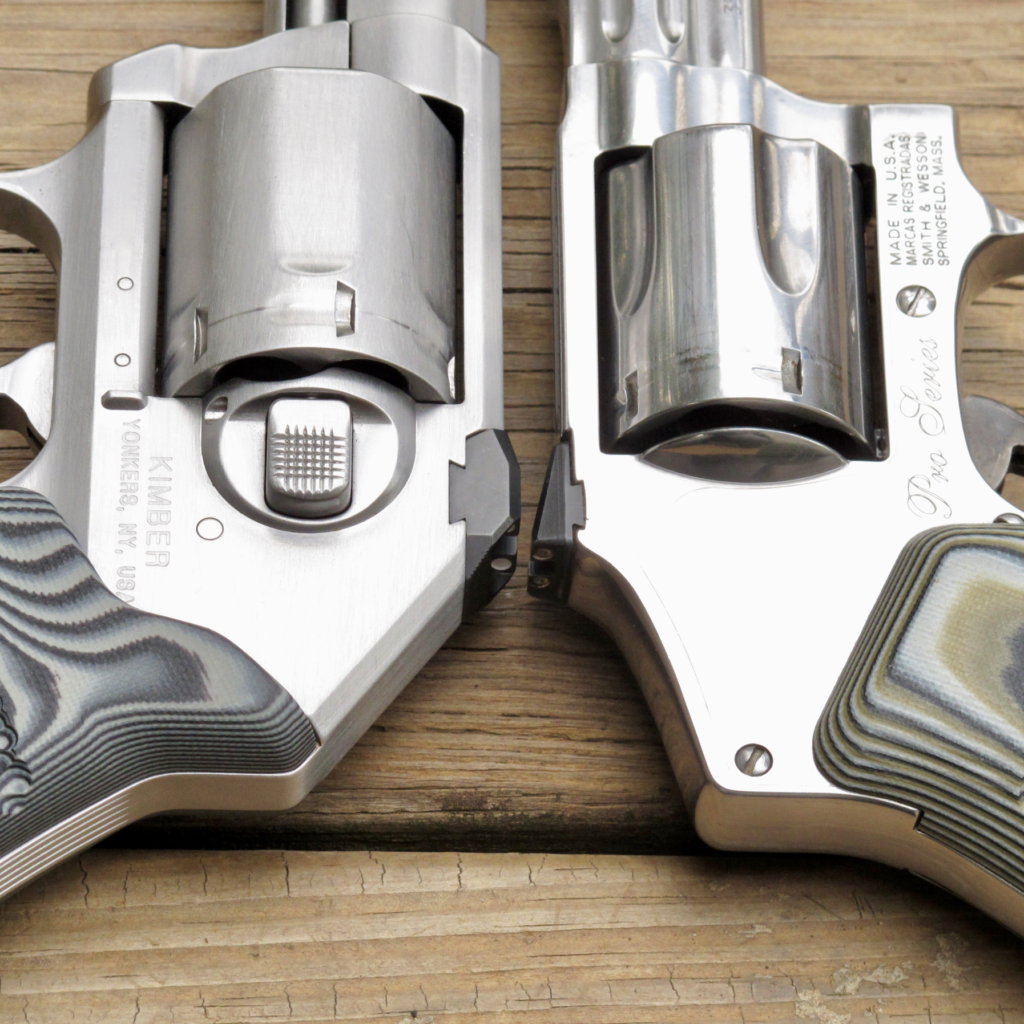
With its smoothed edges and despite its additional (almost) four ounces, I found it just as comfortable for carry. Equipped with a longer barrel and slightly greater heft, the K6s is more practically accurate, giving one confidence in the ability to take longer and more precise shots. With an additional round of ammunition. . .well, you don’t need me to explain that one to you. If you’re on the fence about one of the two of these guns, go with the Kimber. But be advised: it’s not perfect.
The Bad Stuff
The 3-inch Kimber K6s is perhaps the finest small revolver I’ve had the privilege of shooting. It is well made and accurate. It comes in five configurations to satisfy a variety of users, and Kimber shows little sign of slacking off in the development of additional models. But committing to carrying a gun is really committing to a system. This system includes (in the case of revolvers) grips, holsters, and reliable ammunition. If you are an enthusiast it also means you crave aftermarket sights, lasers, and perhaps other accessories.
Speedloaders for the K6s are notoriously difficult to find. All models of the K6s ship with a DeSantis Swift Strip. I like the DeSantis as much as the Bianchi Speed Strip. Still, I can’t quite commit to this revolver without a proper reloading apparatus. Though 5-Star Firearms makes a loader, it is a “twistie” model, and I prefer inline-motion loaders to the exclusion of all others. Additionally, Colt Detective Special loaders are rumored to work, and some K-Frame loaders have been made to work. I was unable to make K-Frame Comp IIs work. Until there is a readily available, factory-produced inline speedloader I would have some hesitation about moving to the K6s.
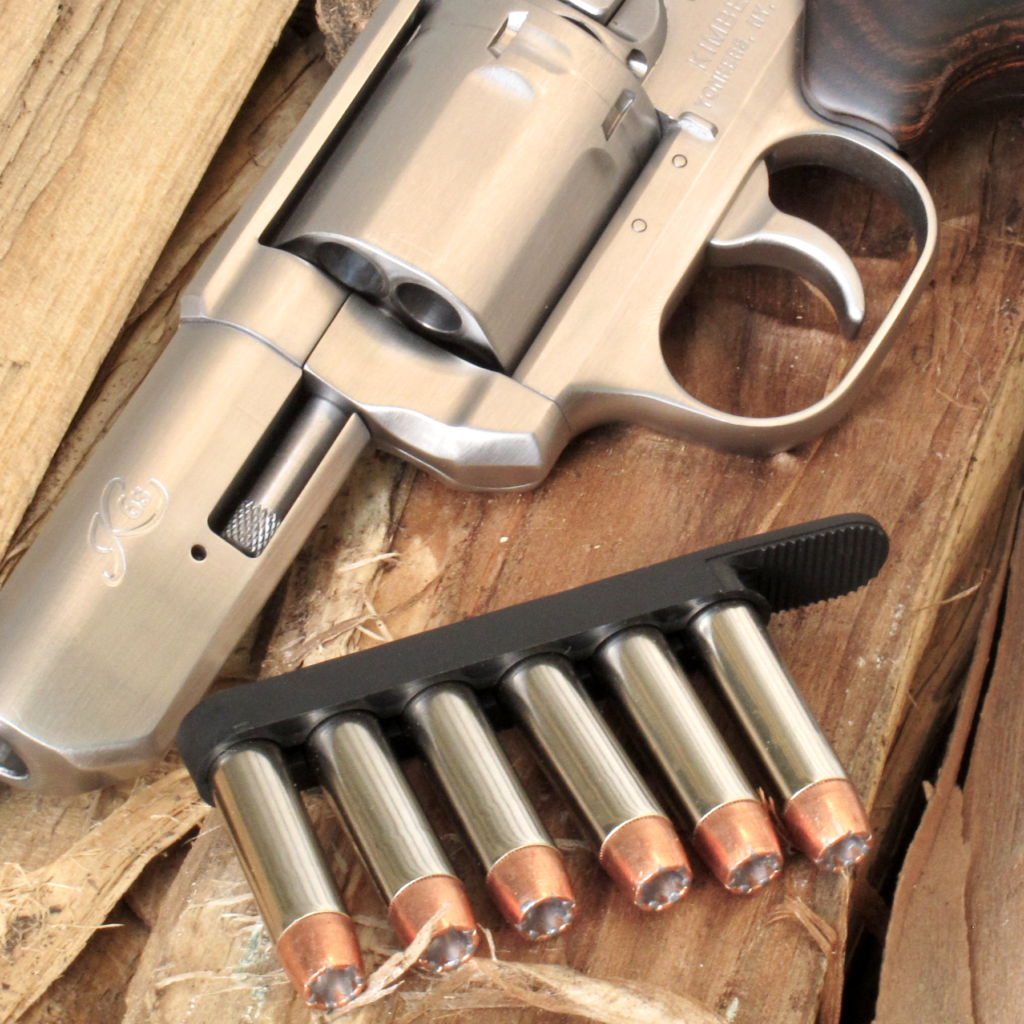
If I were to purchase this gun, I would also have to do something about the sight regulation. At Kimber’s price-point (and with an existing manufacturing capability) I would love to see sights corrected for modern carry ammunition. Failing that, it would be nice to see front sight blades in two or three heights to accommodate different carry loads. Failing that, I’m sure someone like Hamilton Bowen could make a height-appropriate front sight, but that raises the cost of the already-expensive K6s considerably.
Currently the market has not caught up to the K6s, and I sorely hope that changes. This is one revolver I would really like to see the market back. I’ll throw some of that back into Kimber’s court; I hope they are encouraging high-quality Kydex benders and other accessory providers. I think the support I want to see for the K6 will happen eventually; it just hasn’t happened quite yet.
The Bottom Line
All of the complaints I have lodged against the K6s have not been against the gun itself. They have all been directed at the lack of aftermarket support. Don’t let that distract you from the bottom line: the 3-inch Kimber K6s is an excellent revolver! There aren’t many bad things I can say about it. For a revolver made by a bunch of 1911 guys, they got this one better (a lot better) than just about anything from most of the industry’s old guard.
Though it certainly isn’t a pocket or ankle gun, the Biggest Little Roundgun comes close to being an all-in-one revolver for most civilian owners. It is small and shapely enough to be concealable, but big enough to be very shootable and capably fill the home defense role. It offers a near ideal “kit gun” size (if not caliber), and is a fun range gun. The handsome 3-inch Kimber K6s is my interpretation of the “Glock 19 of Revolvers” paradigm. If you’re looking for a revolver for primary carry, I think you’d be hard pressed to do better with any other revolver in current production.
†For now. As it turns out, plastic guns don’t seem to suit me. . .and they actually kind of bore me. I have commissioned a better, more interesting replacement. You guys will be the first to know when it arrives.

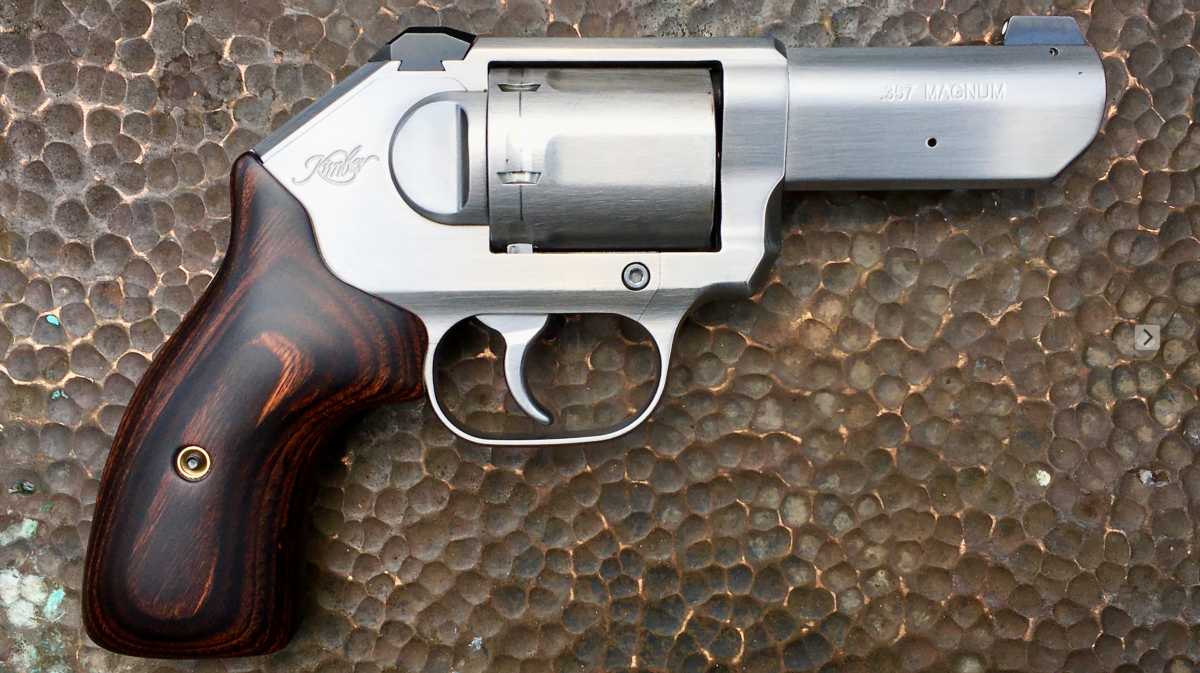
Man, the sight regulation would really bother me. I would much rather have the gun shoot a bit high with standard pressure rounds than low with +P and .357. I am fine with a 6 o’ clock hold, but not so much with a 12 o’ clock hold.
It bothers me too, but not as much as it could. A couple additional thoughts on this: First the site could definitely be filed to raise the point of impact. Second, even if the group is 4″ low at 20 yards (it will be less low at closer distances), a center-mass hold still keeps you within an 8″ circle. Again, that’s at 20 yards.
By comparison my 640 (prior to filing the site) was 6-8″ low at 15 yards.
I saw that end note about the Tupperware! You picked a nice example, but I find they bore me, too. As for this Kimber, I need to see one and handle it. I have been considering a vintage 3” gun, but this one seems really nice brand new. I do not buy many firearms so a premium price for quality is just fine.
Justin, we’re tracking similar paths, buddy. I’m just under 300 rounds in my own evaluation, but seeing familiar themes here. My report to follow soon.
Justin –
You’re welcome.
😉
Grant, I’m glad your design input is being executed so well! This is a most impressive revolver!
Thank you for the review! Looks like a fine weapon. Glad they came out with the longer tube, and that the trigger impressed. My question is about the ejector rod. Internet scuttlebutt is that it isn’t full length, and that’s what my “string measurements” of your photos tell me. Please tell me I’m wrong, it’s full length, and spent 357 casings ejected with ease.
I had no issues at all ejecting brass of any sort, and did not clean the gun at all during my evaluation. However, the rod is probably a shade shorter the one on my 640, and does leave some brass in the cylinder when fully extended. Though the ejector rod’s throw isn’t longer than .357 brass, I doubt you’ll have a problem getting rid of empties.
It’s also good to keep in mind that you probably wouldn’t want a rod that is long enough to fully remove .357 brass, as that would probably make the gun quite a bit more susceptible to under-the-star-type malfunctions with .38 and .357 ammo.
I’ll try to get some pictures comparing some ejector rods to give you a better idea.
Aesthetics are hardly my top concern for a firearm, but man, I’d have a hard time getting around the fact that the K6s is one of the fugliest revolvers I’ve seen in some time.
And, as Greyson mentioned, I can’t for the life of me understand why the sights would be regulated for standard .38 – how many people even bother carrying standard .38 loads for SD anymore?
Then let me introduce you to the LCR! I hate to say it but looks have kept me really unenthusiastic about the LCR.
I’m with you guys on the sight regulation, but it’s about half to a third as bad as my 640 so I can live with it. Supposedly the gun was regulated using 158-grain .357 Magnum ammo…which seems to just happen to work out for regular .38 Special. The bigger question this raises is why would they use a 158-grain Magnum load?
Ha – I own a LCR, though I seldom carry it anymore. With a copper cylinder and Hogue Pyranha G-10 grips, I think it looks fairly snazzy, but of course there’s no accounting for taste. 🙂
Good question on the Magnum load. Kimber just seems to march to its own drummer, which most of the time is a good thing…
My understanding is that 158 grain loads are kind of the common bullet weight for factory zeroing regardless of whether they use 38 Special, +P, or .357. I’m guessing that comes from 158 grain Lead Round Nose .38 Special being a very common load, and the 158 grain .357 Magnum being a semi-viable hunting load (at least in many states). So, in that regard, I think Kimber was just doing the standard thing. That said, using almost any weight .38 Special +P or 125 grain .357 would really have been a better fit for their target audience.
I guess beauty is in the eye of the beholder. I don’t find this gun to be unattractive at all, though it does have an aesthetic of its own. I don’t even find the LCR to be all that unattractive. Now, the polymer Taurus revolvers (especially the Judge Public Defender Polymer)? That is what an ugly revolver looks like.
FUGLY: (Fuh-glee). Adj. 1.) Of hideous appearance; 2.) Nagant M1895. Sentence: Life is too short to shoot a fugly revolver.
Ha – excellent. Esp. the Nagant part.
Thank you for a great review (I echo the sentiment of others that this gun is not getting the coverage it deserves).
Any issues with ejecting ammo? The ejector rod seems to be the same lenght as on the 2″ variant…
COMISSIONED a replacement for carry? Like artful and custom?
Artful? No. Custom? Perhaps…
I have a K6s 3″ and I love it for all the reasons you cite, Justin. An observation and a question or two. First, I’ve found that this little gun is not at all uncomfortable when shooting .357 110gr and 135gr, but the 158gr stuff is simply unbearable; I can’t get by more than two cylinders of it before switching to .38 Spec, a loading that then gives me the impression of shooting .22s by comparison. Here are the questions: [1] Is that DeSantis IWB Flex-Tuck closed on the muzzle end? I can’t tell from photos. I have an Azula holster that’s fine except it is open and, consequently, the muzzle accumulates a lot of lint (also, the K6s protrudes about 1/8 of an inch beyond the holster’s bottom, something I really don’t like). And, [2] how did brass ding the wooden grips? I’ve put only some 200 rounds through it, but nothing I saw at the range gave me a hint of any possible damage to the grips. Actually, I kind of like the smooth wood because it helps conceal the gun even under thin tee-shirts.
Not Justin, but I did stay at a Holiday Inn last night!
1. Open muzzle; 2. I suspect he was talking about the left side panel getting struck by ejected cases, but not sure.
I’ve been shooting the K6s extensively and the only .357s I’ve tried were full house 125s–they were too much in this gun. I haven’t tried the short barrel Gold Dot yet, but suspect the K6s will remain a .38 Spl +P for me, just like all my snubs.
Hi, John. Mike is right; the upper portion (just behind the recoil shield) of the left grip panel started getting dinged up as soon as I started shooting. I’m know to eject with some gusto, so that might’ve had something to do with it.
A full review of the DeSantis Flex-Tuck will be coming soon, so stay tuned!
Justin
Thank you for the great report and writing as always. My comment is about the cliffhanger you left there! I’m enthralled by the idea that your carry path has gone from 640 to Shield and now you have a new idea. I can identify a lot with your thoughts and preferences. Therefore, I’m waiting with great anticipation to learn where you go next on your quest for the least imperfect. All the best, Todd
Thanks, Todd, I’m glad you caught that! Unfortunately it will be 4-6 months before anyone (including me!) gets a look at it…
Things changed a bit after my first reply to this post. After years of not carrying, I found myself needing to pack a pocket gun once/week at night. I dislike carrying IWB and have trained for drawing a small gun from a pocket holster. For now my Taurus 85 is on duty. It’s one of our nightstand guns. I practice frequently drawing the gun, my thumb shrouding the hammer. I only train shooting DA.
That’s a short-term fix as I look for a wheel gun with a covered hammer. I’ve recently checked triggers on an LCR, S&W 642 and 649.
Then…the Kimber. A 2″ barreled one is likely the one I’ll buy in a few weeks. I’ve never met a DAO gun with a trigger so smooth out of the box. I pack .38 +p, not .357s, when I carry. You are right about the edges of the gun, too, in every respect rounded to avoid any snags.
So thanks again for the review.
I completed a review of a 2″ K6s variant, but traffic has been slow over the summer and we’re holding onto it until Fall. Plus, we’ve done a lot of K6s articles lately, and don’t want folks to get bored with them.
You’ll be glad to know, however, that the K6s is every bit as good in the shorter format!
I picked up a 3in K6S as well. 120rds through it while I waited for night sights to arrive. Front sight looked a bit crooked. Removing the original proved that front sight slot was cut off center and uneven. Kimber has it now for a new barrel and the installation of my sights I ordered. If you buy online be prepared for small issues likes this. If you pick one up in person, take a close look at it before you buy. Either way, Kimber seems supportive so far.
Good info, Chad. Let us know how it works out for you, please.
So I’m late to the party on this review. But I have some extra cash – that of course should go into another revolver! Here’s the real question – do 357 mag. shells eject from this revolver as well as other, older 3 inch revolvers? My EDC is a 30 years old model 65. One of the great beauties of the 3 inch K frames was the longer ejection rod and being able to clear out full length 357 mag rounds. I also occasionally carry a 3 inch 686, which also clears out 357 brass nicely. I’m comparing this to a 2.5 inch model 19 – which I only use with 38 +p. Just doesn’t clear the casings out like I want it to. The pictures of the K6 three inch makes the ejection rod look the same as the shorter barrel models. I know you commented on thsi; but was wondering how it feels compared to your model 65.
Dave,
I don’t want to spill the beans, but I have a big article planned all about ejector rods and the difference between ejector rod length and ejector rod throw.
The throw on the K6S is appoximately .860″. That’s roughly the same as a 4″ Ruger GP100, and only about 1/10th” shorter than the throw on my 686-3 and Mike’s 3″ Model 65.
After a lot of shooting with the K6S, I’ll say this: like most revolvers it will get the cases clear if you do your part.
Best,
Justin
I agree with Justin. Ejection on my 3” K6s is very good—much better than a 2.5” K-Frame 19/66. You can purchase one with confidence that there will be no issue.
Wish I could find longer grips. BTW: 5 star firearms make a special speedloader for the k6s. You need to check them out.
Thanks Robert, we mention them in our other K6s coverage in these pages. Glad to have you here, and hope you’ll enjoy the site.
I definitely mentioned that in the article, and we’ve reviewed 5-Star here before.
As far a sight regulation. It’s a carry gun for distances of 21 feet. I don’t think you will miss you target with any load. It’s not a range gun by any means.
We see things differently Robert. Take a look at the world you live in, and ask yourself how many shots might need to be taken at more than 21 feet. A hallway in your home? An aisle in a supermarket? Across a few cars in a parking lot? We don’t get to choose the distances we are attacked at, and shouldn’t limit ourselves unnecessarily.
The gun is capable of making long range hits if you are, but the sights need to be up for the job. I occasionally shoot my snubby guns out to 25 yards, and have even tried a few 50 yard pokes for fun. It can be done if the sights are regulated well enough and you know your hold corrections.
It’s only a “card table gun” if that is all you are capable of (to misquote Claude Werner). I demand accuracy of all of my carry guns, and I don’t think it’s a big ask.
Conversely, skill is vastly more important than gear. I have made 100-yard shots with the K6S because I knew the holdover. This does make a fine range gun. Still, this gun should have been regulated for a more appropriate load. The 158-grain .357 is probably not what most people are carrying in this revolver.
Thank you for this review article. I found it helpful, as I am thinking about purchasing it.